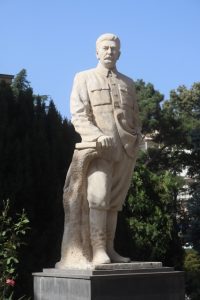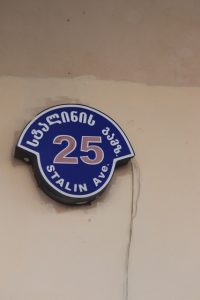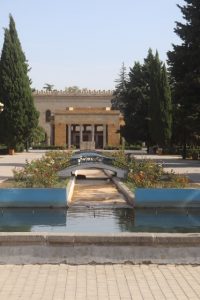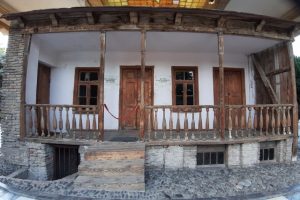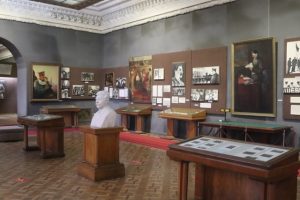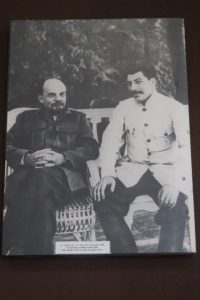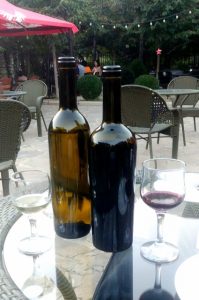Gori’s only claim to – disputable – fame is the Stalin Museum, for the man who was born here.
There is only one reason to come to Gori. The Stalin Museum, at the far end of Stalin Avenue. And it is not even the contents of the museum that is the reason. Lots of old photographs, paintings, even carpets with the image of Stalin. Letters, newspaper cuttings, the various books he wrote and the translations in many different languages. In any case, most of the labels are in Georgian and Russian only, very few have English captions. No, it is the fact that they have a museum at all, for what must have been one of history’s most cruel dictators, responsible for the death and misery of so many millions. Room after spacious room of material that gloriously illustrates the greatness of the man, no shame whatsoever. It is only at the ground floor, after you have crossed all those rooms full of magnificence, that there is a tiny little, easily overlooked section, under the stairs, that provides a few quotes of people who, perhaps, were less impressed and somewhat more critical about the achievements of the man. But nowhere is there any acknowledgement of the crimes against humanity Stalin was directly responsible for. That would be too much to swallow for the town of Gori. Where Stalin was born.
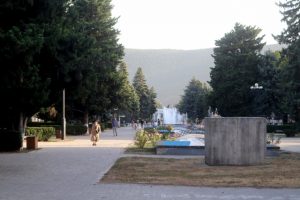
the broad walking part in the middle of the avenue, with on the right the plinth where the earlier statue stood
The museum itself was purpose-built, in 1957, even after then-Soviet leader Khrushchev had officially denounced Stalin. That didn’t put off the inhabitants of Gori. The only concession made so far is that the huge statue of the man that was in front of his house – that has been preserved under a glass roofed Doric temple -, has been taken down, leaving an empty plinth. But there are enough smaller statues, and busts, left, inside and outside the museum. It remains kind of weird, this official honouring of a tyrant. It is a bit like Austria having a Hitler-museum.
Luckily, there is in fact a little more to Gori. Not only did we have a drink on Stalin Avenue – how many people can claim that? -, we also had a lovely wine tasting evening with Sozzo, owner of the Black Star restaurant. Because we did show some interest, we were immediately offered to try several of the locally grown wines, which, all three of them, were of excellent quality (and the white variety was an excellent accompaniment to our grilled sturgeon, something I don’t think I ever had before). A little more tasting, including the very nice Usakhelauri – Legend of Georgia -, and the inevitable chacha, completed a wonderful evening, that took away a lot of bad taste about misplaced museums.
Next, we see a few more churches, and look back at our second exposure to Georgia.
